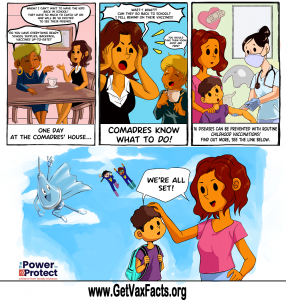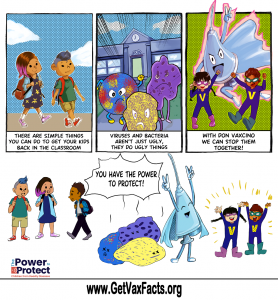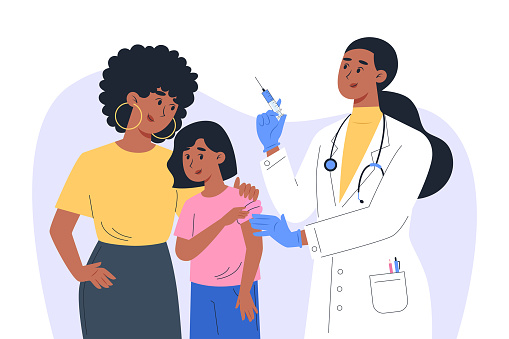Is your child up-to-date on their vaccinations?
When asked this question, did you automatically think of the COVID-19 vaccine, or did you think “Oh, the shots we get at our routine appointments?” Most of us are only thinking about COVID-19 and its emerging new variants that make headlines almost every day. And we are not alone.
(Another) Public Health Crisis

Parents and caregivers have self-reported that their children are behind in their regularly scheduled vaccinations. The journal, Annals of Family Medicine, has published that ‘routine’ vaccination rates have dropped significantly, with a sample of 10 states reporting a 60% drop in MMR (measles, mumps, and rubella) vaccinations for children ages two to eight. As students return to classrooms this fall, they will be required to have their vaccinations—even the routine ones—up to date before they enter the building.
We’ve learned that many children missed annual check-ups or had telehealth visits during the pandemic. These ‘wellness visits’ are particularly important for children and adolescents because they are when pediatricians ensure they are safe from significant illnesses such as measles, hepatitis, meningitis and more. Many families lost track last summer and even this past summer, as their children’s camps and sports schedules were disrupted and so they did not need to complete the usual requisite forms.
Make Sure Your Child is Protected
It’s been a tough year all around. But the result is that your child may be venerable to one of several serious diseases. The good news is that, now that you are aware of the problem, you can do something about it. It’s also good news that (as of this writing) children 12 and older can get caught up on their routine vaccinations and get their vaccination for COVID-19 at the same time.
To get started, make an appointment with your doctor, check with your local pharmacist, or speak with a school nurse. Community health clinics also offer vaccines for families who do not have a regular doctor. Even if you are unsure if certain treatments are good for your child, we urge you to ask questions of your physicians or nurses and listen to the answers. Keep in mind, everyone worries about the stated side effects of medications or shots, but we rarely hear the stories of what happens when a child gets a disease, such as measles or whooping cough, that they could have been protected against.
Lead by Example

Getting advice from medical professionals and making decisions based on this information is also a good way to teach your child how to manage uncertainty in these demanding times.
The website GetVaxFacts.org has a list of the available and recommended vaccines, most of which are required to go back to in-person schooling. If your family’s budget is tight or you do not have health insurance, the U.S. government has a program, Vaccines for Children, that provides funding for free vaccinations for children through community health clinics. Get more information on this program from the CDC. Past president of National PTA, Leslie Boggs, also recently discussed this issue on the Learning First Alliance’s podcast. Listen to the episode.
The good news about falling behind on vaccinations is that this is a problem you can easily solve. And, not only will catching keep your child safe from sometimes deadly diseases—it will also protect your community.
Richard M. Long is the Executive Director of The Learning First Alliance, a partnership of leading education organizations, including National PTA. The Learning First Alliance represents more than 10 million members dedicated to improving student learning in America’s public schools. We share examples of success, encourage collaboration, and work toward the continual and long-term improvement of public education based on solid research.





